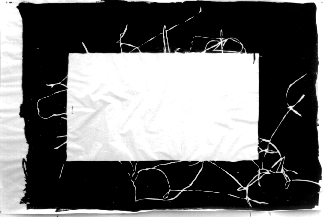Judaism is the cultural tradition which shaped my identity throughout childhood. I am an atheist, but I don't doubt the culture experience of the shared historical experience, and ideological narrative, of the Jewish identity has a profound influence on how I perceive the world today. This influence is purely subconsciously intuitive and somatic: I often 'feel' Jewish, or as part of some of the members of that group who refer to themselves as Jewish.
There really is not a single, unified Jewish identity, and this is problematic for defining it under a comprehensive category. The spread of the population following their liberation from Babylonian exile under Cyrus the Great into a Jewish diaspora spanning Europe Spain and France (Iberia), Germany and Poland, the Slavic regions of Southern Europe, Russia, and of course the Kingdoms of Jerusalem and Judea, and Northern Africa, obfuscates any unifying identity, and at the same time unifies their identity through the very differences between these settled populations, and the effect the local customs and conditions had on the unique arrangement of what common elements we might identify with Judaism as a semiotic structure, or a system of signs and symbols. Whatever is common about these different interpretations may have been preserved not despite the dispersion of the population but because of it; in exile, the oral tradition of its origins as a tribal religion began its transcription into Aramaic in the Babylonian Talmud, and in the ancient Hebrew of the Old Testament. I am fairly fluent in Hebrew, but as a Sephardim whose Jewish relatives lived under the rule of religiously tolerant Muslim Andalusia in Spain, I write it in a syntax so close to Arabic it might be considered a dialect of both Hebrew and Persian Arabic speech. The Talmudic writings and the Torah were written in these languages to guard the knowledge in them from the masters in their captivity. Soon, a tradition evolved that necessitated a division of labor between a literate class of transcribers and interpreters (Rabbinic scholars, of whom the High Priest was the Rabbinic leader and guardian of the temples), and a class of producers. These included masons, farmers, carpenters, shoemakers, weavers, metallurgists and dye processors. Without a nation or sovereign territory for the settlers, this hierarchy did not produce the sharper divisions of labor of the priestly castes or military oligarchies of, say, ancient Greece or the Germanic states. Even Jerusalem was a Roman principality where two Jewish-Roman Wars were fought, destroying the Second Temple during the conflicts. Because the economic and social patterns of Jews did not make it possible for an independent State of a ruling family to rise above the producing members of their population, their form of social production was closer to the Kalahari or Ubuntu semi-nomadic, lineage tribal societies of Africa, based on egalitarianism, mutual cooperation, common ownership and use of resources, and charitable giving to those families who possessed less than they needed due to the vicissitudes of natural geographic and climate factors, and the limits to their inferior political status compared to the full citizens of the empires and nations they emigrated to. The religious texts described a people chosen to repair the world by doing charitable acts, resting on the 7th day from labor to reenergize themselves to work more energetically in the 6 other days of the week toward their chosen goal of building a model society from the world of others which their utopia would liberate.
rld
Jewish persecution in Europe led to their acceleration of those deeds intended to accelerate the rate of this society's expansion. A global society embedding its cultural and economic patterns under a unified world system founded on these principles and commandments exists, then, in germ form, in the modest tribal ideology of its ancient Israeli population. The exploitation of the Jews and their clearancet from the common, arable landed property on which they settled sustained themselves on its usufruct were their reality in their search for a permanent territory to which their Jewish identity might be fixed and constituted by their multitude of differences in local territorial, tribal signs. The reality of this 'multitude' was its material Becoming along different lines of flight, each following a distinctly real path of evolutionary development,y theh sum of which is the virtual plane. The virtual becomes, but has no actual Being, until the Being of the Jewish identity repeats itself through recursive cycles of material reproduction within an extended series of this repeated production. The series, between any two stages within the movement, produces the same mass of this substance in the last stage as the former produced. ( proceed from here later

No comments:
Post a Comment